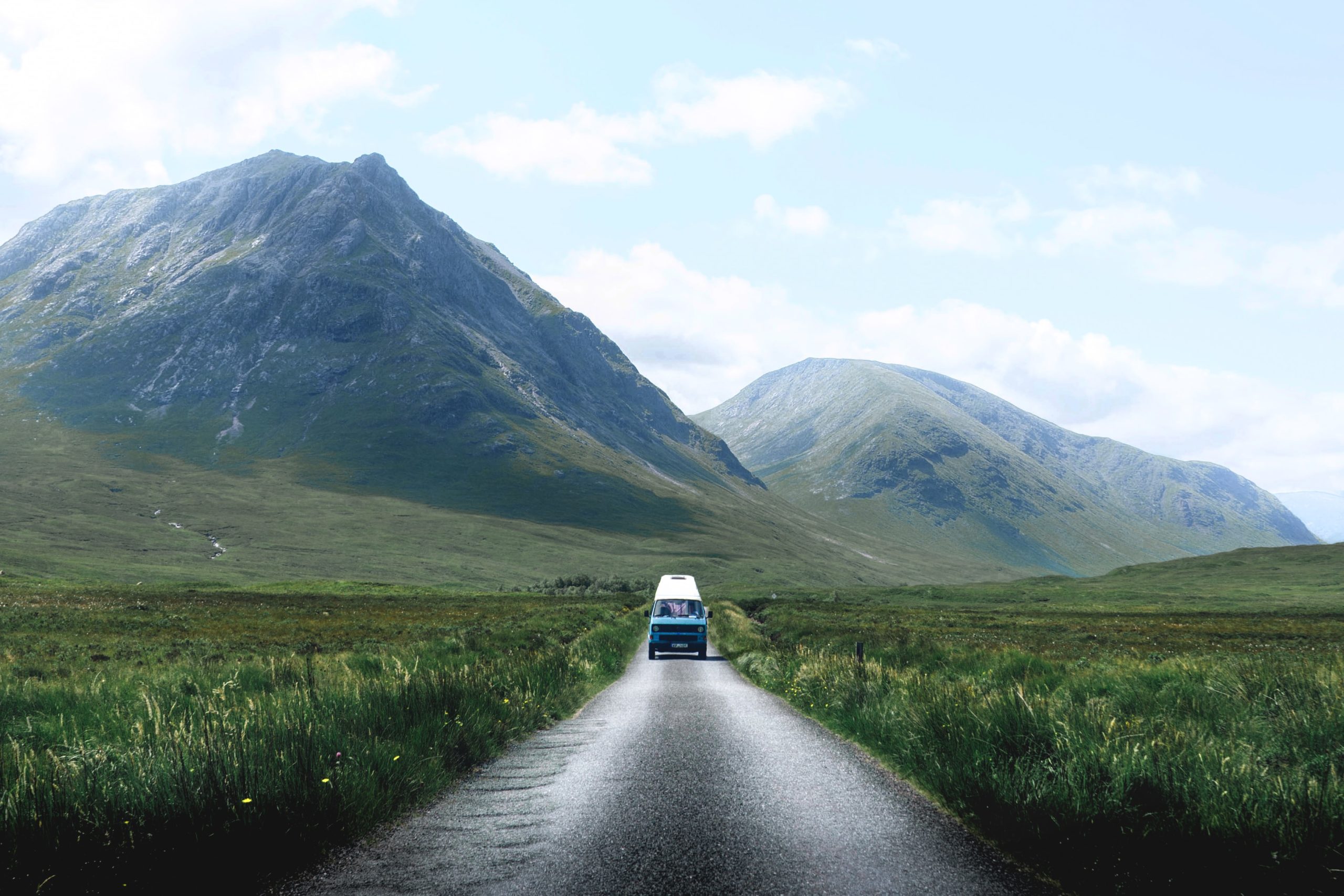
America’s Route 66. Iceland’s Ring Road. Scotland’s North Coast 500. Australia’s Great Ocean Road. With so many iconic routes, a road trip might be just the vacation to balance your craving for adventure with your need for social distancing.
Mindful travelers are cognizant of their impact on a destination—and that goes for the miles covered on a road trip, too. Sustainability, by definition, harmonizes environmental, economic, and social wellbeing. So as you’re planning to explore, look for opportunities to not only limit your impact on the environment, but also bolster local economies and support the people you meet along the way.
Here are nine tips to help get you started planning for and taking a sustainable road trip.
Get road ready
Before you head out, double-check the date of your car’s last maintenance. If you’re renting a car, ask the rental car company about the vehicle’s maintenance record. Hertz, for example, has a safety protocol for rental car maintenance and cleanliness called Hertz Certified Clean & Safe. This 35 point checklist verifies that the vehicle is certified clean and safe before it's rented—and is shared with the driver before he or she drives off the lot.
A well-maintained vehicle not only saves on fuel consumption and is friendlier to the environment, it’s safer to drive, too. The last call you want to make on your road trip is to roadside assistance.
Consider your vehicle type
Renting a car or considering purchasing a new one? Choosing an electric or hybrid vehicle can help limit your impact on the environment. Use this alternative fueling station locator to plot where you’ll make your fuel stops.
When possible, seek out alternative energy-powered charging stations—such as a solar-powered station—to power your vehicle with the cleanest fuel source available.
Put the cool in carpool
If you’re traveling as a group, your best option is to carpool. Carpooling in one vehicle with your family or friends is the more environmentally-friendly option versus taking multiple vehicles.
Take it slow
According to the U.S. Environmental Protection Agency and Department of Energy’s latest Fuel Economy Guide, your vehicle’s fuel efficiency decreases by seven percent for every five miles per hour you drive over 60 MPH. The takeaway? Choose the slower, scenic route. Doing so also allows you to stop at small businesses along the way—supporting (and sustaining) local economies.
If you have to drive for long stretches of highway, use cruise control to maintain a constant speed and save fuel.
Think reusable
Coffee cups. Water bottles. Utensils. Face masks. These are just a few of the single-use items you can avoid on a road trip by bringing your own reusable versions. You can also pack a cooler with snacks in reusable containers to limit the waste you create (and dispose of) as you travel, too.
Camp along the way
If your road trip requires overnight stops along the way, you can lessen your environmental impact (and conserve your travel funds!) by camping. When you’re mapping your route, plan ahead by booking campground reservations in advance. You can then forward your reservations to TripIt to create a master itinerary and store all those details in one place.
Choose walkable destinations
When you’re plotting your stops, research the walkability score of your intended destinations. Doing so will help you choose accommodations that are not only within walking distance to nearby amenities such as restaurants and cafés, but also public transit stops. Leverage TripIt’s Neighborhood Safety Scores to assess the safety of the areas you’ll be walking through. With separate safety scores for day and night, you can make an informed decision as to whether the location of your potential accommodations meets your walkability and safety standards.
Make your stops count
Stopping at a restaurant to grab lunch or a local store to stock up on essentials? Decrease the carbon footprint of what you buy, eat, and wear—and financially support those who believe in doing the same—by buying local. Support local businesses or restaurants that partake in sustainable practices, such as composting food scraps. Check out local farmer’s markets for freshly-grown and locally-sourced items. TripIt’s Nearby Places feature can help you locate restaurants, cafés, and stores along your sustainable road trip route.
Prioritize your wellbeing
A truly sustainable road trip balances the mental health benefits of taking a vacation with the good of supporting local economies, as well as taking care of (and limiting your impact on) the environment. One facet shouldn’t be sacrificed for another, so remember to slow down and take in the moments as the miles pass.
Part of being a sustainable traveler means sustaining your wellbeing, too.

